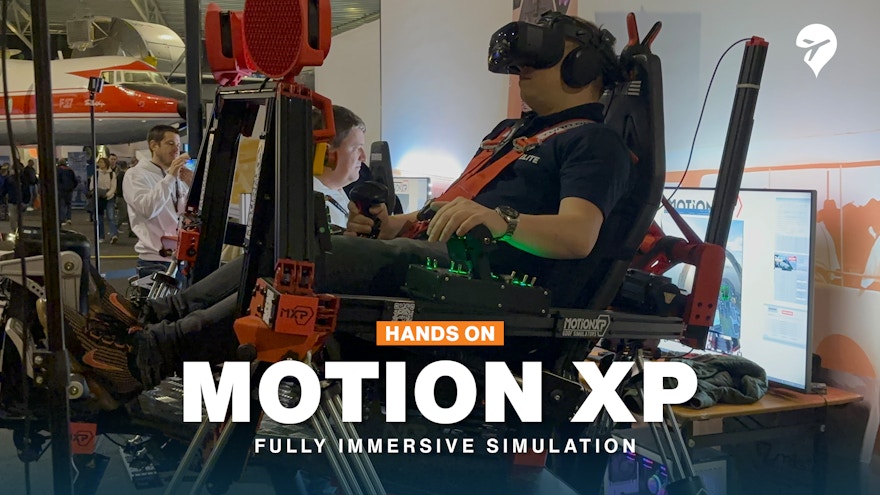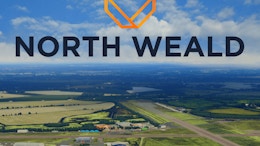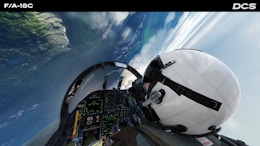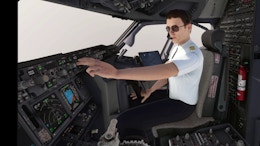There were lots of hands-on experiences available at the recent FSWeekend in Lelystad. Like a child in a candy shop, it was hard to decide what to put my name down for and try first, given the popularity of this year’s show and the limited spaces available to try certain exhibits. One thing that caught my eye was the various motion platforms that were being showcased. Some large, some small(er), some with a near full cockpit, some with multi-screens, and some with barebones peripherals, utilising VR. Of course, many of these have a price range that typically, is unfeasible for the regular user and users will have to consider limitations on space, headroom and setup. Living in an old, terraced house (‘townhouse’ for my American companions) in London, these platforms fall outside of what’s feasible on all those levels, so I was excited to indulge myself whilst at the show and try something I wouldn’t be able to have back home.
One motion platform that really stood out to me was being showcased by MotionXP, a business that only started in 2023 and was the brainchild of Hervé Dureiken who decided there was something missing from his own flying experience whilst using DCS in VR that was limiting the feeling of flying the real thing, movement. Hervé, an engineer based in France, then spent hundreds of hours meticulously building his own motion platform, and realised there was a gap in the market for the home user who wanted a smaller platform that could offer flexibility to enhance all types of simulation platforms such as flight, racing, and space with just a switch of peripherals.
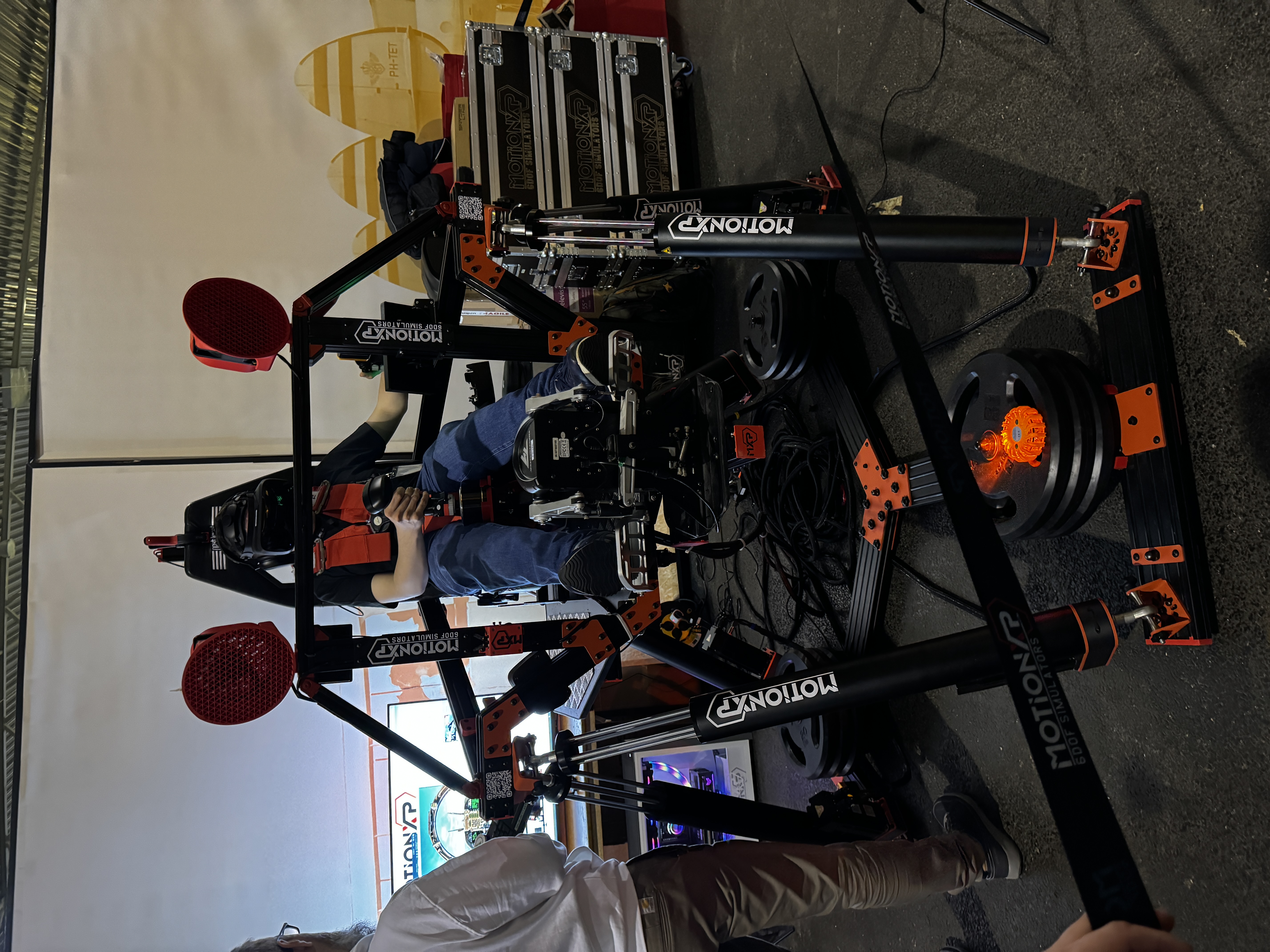
After watching someone try out one of the two systems that was on show and observing the range of motion, one thing that struck me was the noise level or lack thereof. Due to the system being fully electric, it was silent. Perfect for home use. I got chatting to Kima, a member of the team and it turns out I was speaking with a customer who loves the product so much, and came to the show to assist Hervé in demonstrating his products. I then learned that the entire team were all originally customers of MotionXP, and it was obvious that there was a real sense of community around what Hervé had built. Whilst chatting with the team and booking my slot with Sylvie, wife of another helper, Daniel, who was smart enough to let Sylvie try the platform before purchasing his version, I was excited to come back and experience what Kima describes as ‘a totally different experience to what you’re used to’.
Prime and Bumble
The MotionXP platforms, of which there are two, consist of Prime and Bumble. Prime was the first commercial product designed and built by Hervé, is a type of 6DOF platform meaning it has six degrees of freedom (or motion) and is capable of movement through six different axes; pitch, roll, yaw, up & down, left & right and forward & back, which adds a huge amount of movement when flying. The second platform on show was Bumble, and the platform I used. Bumble is slightly smaller in footprint and therefore Bumble doesn’t have as much range in the six dimensions compared to Prime but from the numbers below and my experience, the additional range wasn’t something that I felt was missing.

| Prime | Bumble | |
| Pitch up | -/+35° | -/+35° |
| Pitch Down | -/+32° | -/+30° |
| Roll | -/+32° | -/+32° |
| Yaw | -/+40° | -/+30° |
| Footprint (mm) | 1900×2160 | 1700×1700 |
| Minimum Height (mm) | 2230 | 2260 |
Getting Hands-On
I was slightly nervous and excited to experience the motion platform. It was something I had never done before but I think I was more nervous about my colleagues and other people walking around the show possibly getting a glimpse of one of my not-so-great landings; even in an F18 with sturdy landing gear. I climbed up onto a resting platform that felt like getting into an actual fighter jet, with hand and foot holds, to allow me to get in safely. Sitting in the seat was comfortable and with the assistance of Daniel, I strapped myself in using the racing seat style four-point seatbelts which was one of the coolest features that put a big smile on my face. As I moved to tighten the belts, I was told that I didn’t need to as they would automatically tighten. Lo and behold, with a click of a button from Daniel, the straps tightened to pull me comfortably snug into the seat. When I was all strapped in and ready to go, VR headset on, Warthog F18 flight controls in my hands, the platform raised to the operational position as my view reset perfectly to reveal the carrier below me.
Completing the famous ‘360 free and correct controls check’ with the stick, seeing my virtual hand take a grip on the canopy handle, with bated breath and in true Top Gun fashion, I was pulled tightly into the seat and tilted backwards as the F18 was launched from the deck, into the air. This initial feeling put a great big smile on my face, I felt like I was experiencing something close to real G-force. Without the external visual reference points to judge how far I was tilting as I threw the F18 around, trying to give Dubai the best display they’ve ever seen, it felt like the movement range was much greater than it was moving in reality, which enhanced the experience even more. As I pulled more virtual G-force, the straps tightened and then when I relaxed the controls, the straps loosened. This increased the feeling of immersion and after two or three times, I forgot where I was, engulfed in the virtual surroundings. When decelerating, to enhance the feeling of the aircraft slowing down, the straps tighten as the platform faces the ground to emulate the slowing of the aircraft and your centre of gravity changing.
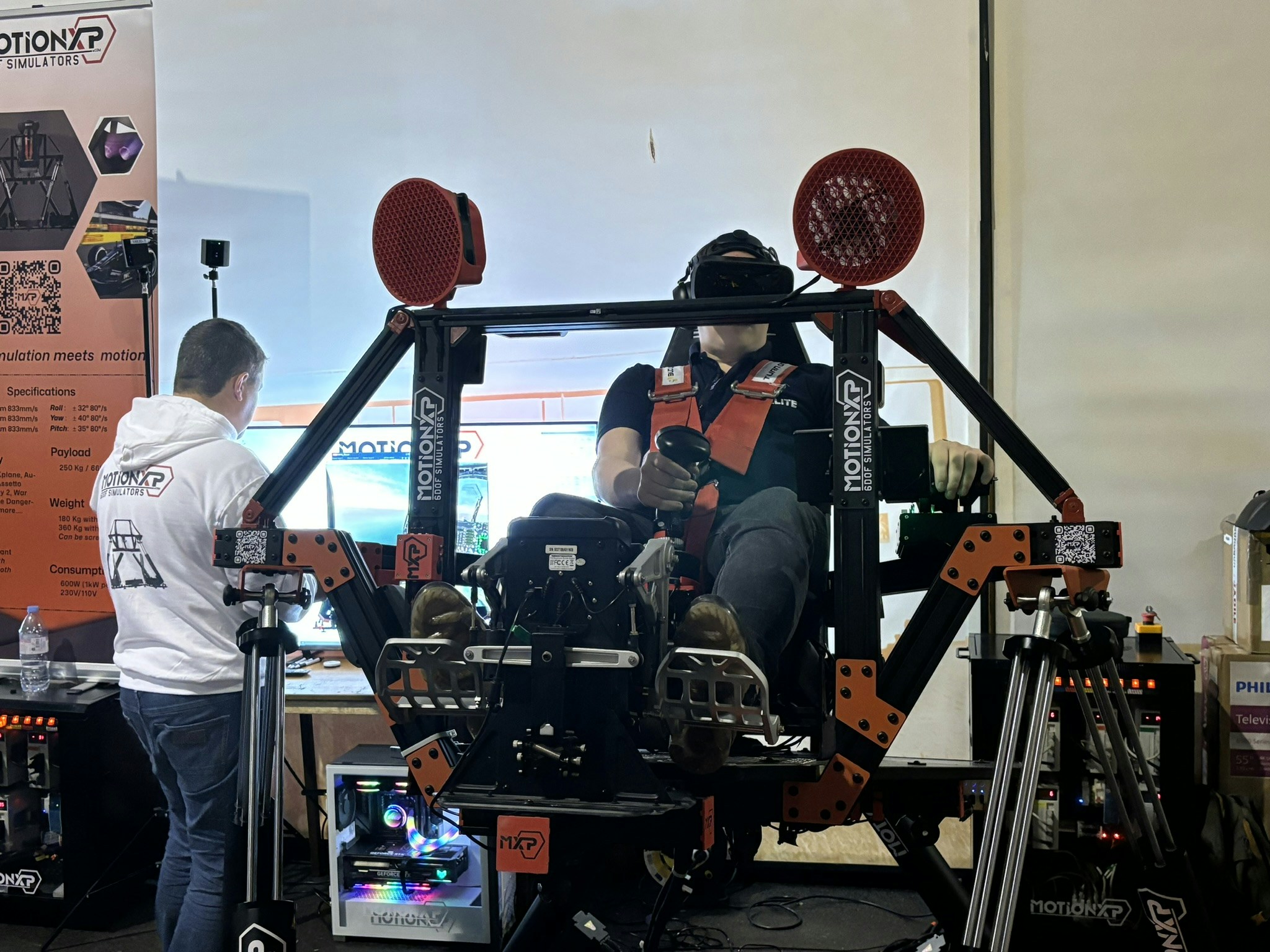
With a short flight over to Dubai International Airport, I configured for landing, extending the flaps and landing gear, inducing drag to the airframe tipped me forward as the straps tightened to simulate the force slowing the aircraft down. I lined the Hornet up with the runway with a high angle of attack to keep the glide which reflected in the movement of the platform with even the smallest of changes. I found that having my seat move with the virtual aircraft, it was easy to feel the inputs I was making and made controlling the aircraft much easier. Over the threshold of the runway, I closed the throttles and planted the F18 firmly on the tarmac with one of the best F18 recoveries I have performed to date.
After coming to a complete stop, Daniel approached to retrieve my VR headset and I was brought back to reality with a thump. I could feel the smile on my face from ear to ear as the platform returned to its resting state. I unclipped the four-point belts and grabbed the handholds to climb out. Experiencing the motion platform was like the first time I tried VR. Just when you think it couldn’t get any better, my mind was blown again at the experience.
From the setups on the day, compared to Prime, Bumble had the addition of two distinct fans on the front of the platform blowing wind into the user’s face. This wasn’t to just keep you cool on a hot summer’s day. The wind also scaled up or down depending on the speed of the aircraft you were flying or the car you were driving. In the F18, this wasn’t something that I felt added to the level of immersion I experienced but if I was flying low and slow in a Stearman Cadet or driving fast in a convertible Porsche Spyder around the Nürburgring, I think this would be a much more valued addition.
After my experience, I stayed a while to chat with Hervé about the story behind his business, when a gentleman approached us whom Hervé immediately recognised as his second customer. It was obvious that whoever has owned a platform has not only purchased a great product that they speak so passionately about but has joined a community full of like-minded people with a shared passion.
To date, Hervé has created and sold 52 units in just two years. Something that surprised him as he mentioned to his wife that ‘if I sell two or three units a year, I will be happy’.
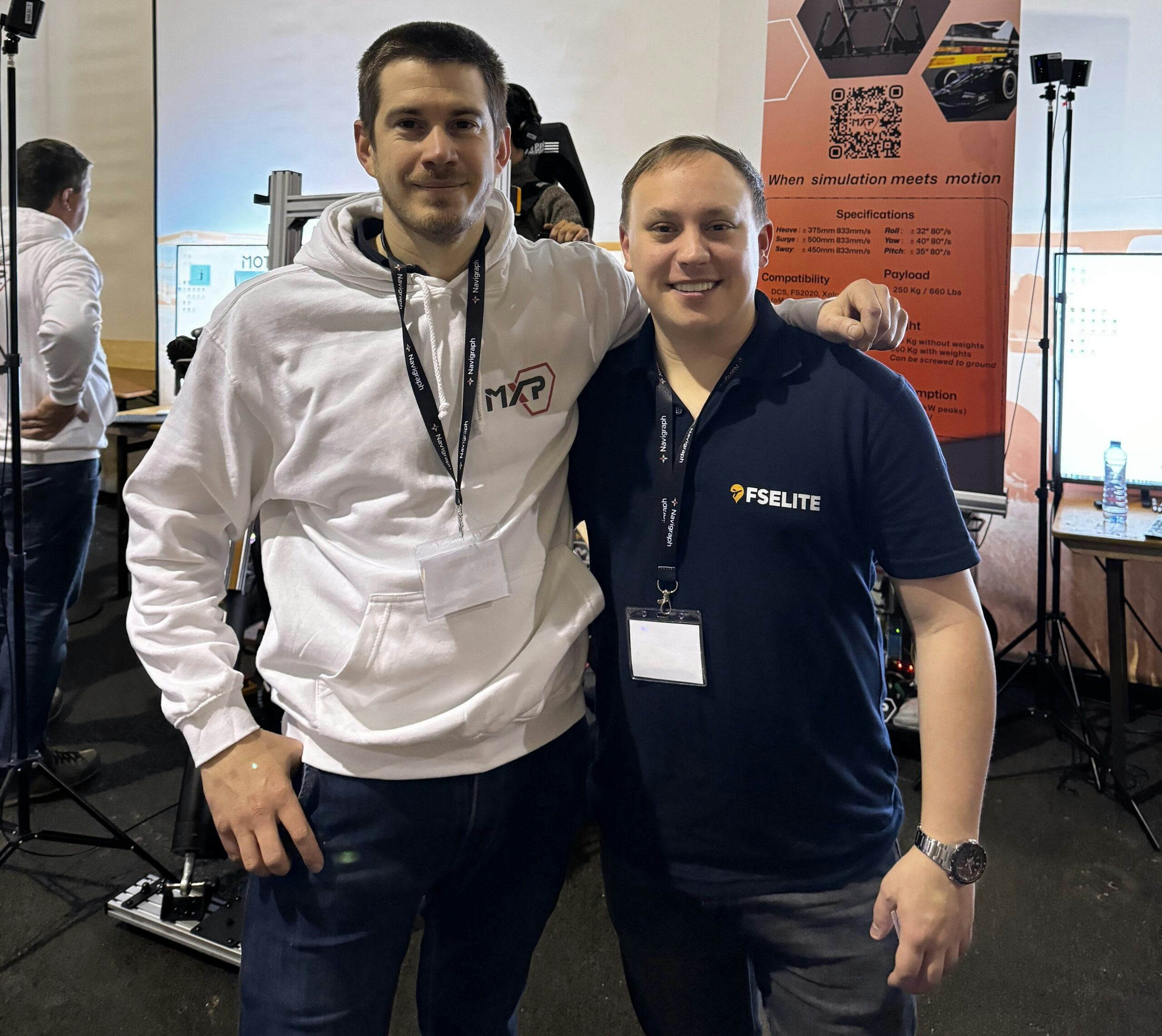
Cost
Each of the platforms starts from €10,000 in a ‘flat pack’ state. Hervé’s engineering background has been put to great use to enable the construction of a platform to be as quick, easy, and straightforward as possible. Customers will also benefit from the support from the current customer base in the form of a private discord, plenty of YouTube how-to videos and a plethora of instructions as to how to build your platform. Alternatively, at the cost of €14,000, Hervé and the team will pre-build your actuator system for you so all you have to do is build your custom platform. And Finally, if you would like to take it to the next level and have the team build your actuators, base platform, prepare your peripherals, customise your settings and get your platform in a ‘turnkey’ state, ready to fly, the team will put together a bespoke quote for you upon request.
Conclusion
Although these initial costs seem on the steep side, the saving comes when comparing this platform to others on the market. Given that MotionXP encourages you to build your own platform whilst giving you all the tools and support to do so, makes either Bumble or Prime a valid home motion platform to consider. MotionXP platforms also add value for money as you can fully customise the setup you want, and restrict movement to the confines you have, and they plug and play usability with support for many simulators and driving games. All you need to change are the peripherals.
After considering my experience and the flexibility of the platform, I have tried to think of ways I can convince my partner that I need one, that we have enough space for one, and that of course, we can afford it. Although I haven’t put an order in for my unit, I am still living in hope.
To read more about MotionXP, their products and the team that brings it all to life, head over to their website.
